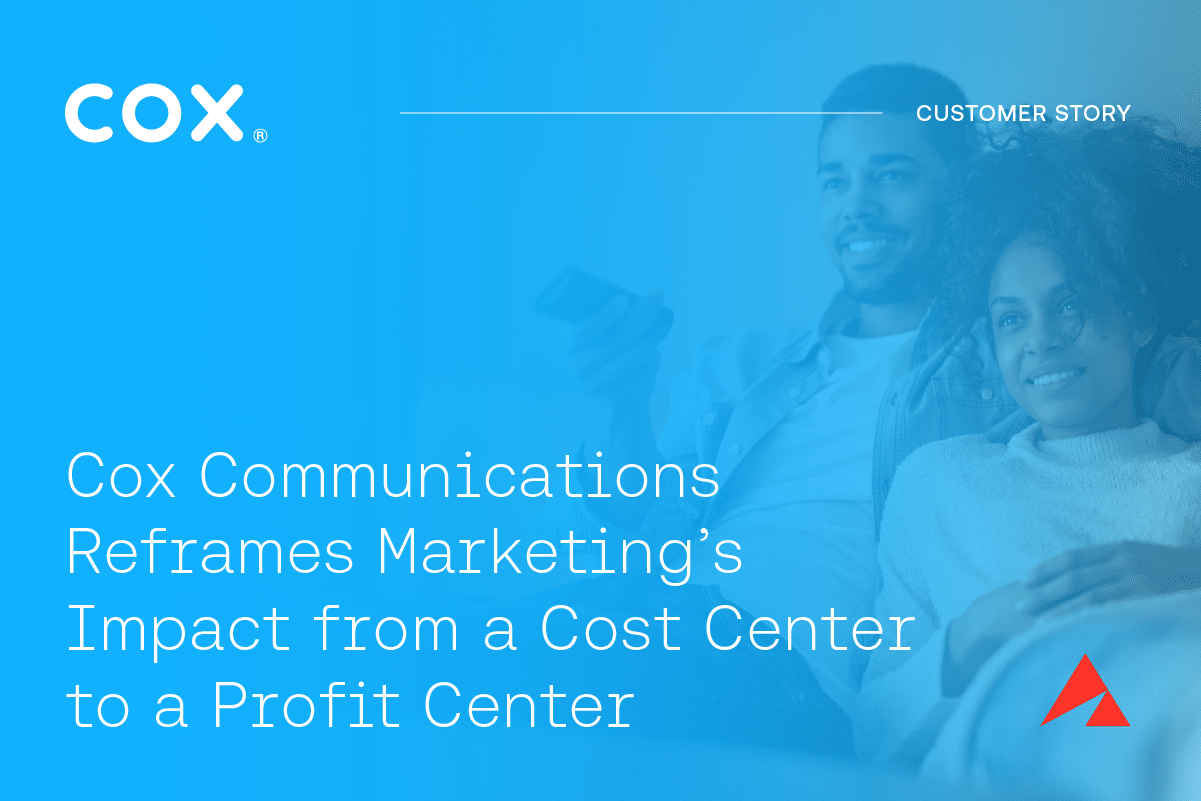Cox Communications Reframes Marketing’s Impact from a Cost Center to a Profit Center

Goal
During the COVID-19 pandemic, there were rapid shifts in consumer behavior and media consumption that greatly benefited the telecommunications industry. People were spending more time online and eagerly upgrading their broadband to satisfy new online habits. Consumers were actively researching service providers for quality service that would help them connect seamlessly with each other, both personally and professionally.
In 2021, Cox Communications, the largest private broadband provider in the United States, had a front-row seat to this massive shift, and experienced robust growth across their coverage areas.
However, as category demand faded in 2022, post-pandemic macroeconomic and competitive pressures created volatile conditions that required quick reaction from Cox. Cost for digital media surged with competing large broadband providers continuing to increase their marketing spend, creating significant headwinds.
Globally, brands began to pull back on marketing spend in anticipation of an eventual market downturn. Cox was no exception, and Cox’s marketing budget was at risk.
Operating in a highly competitive marketplace, Cox wanted to react quickly to unprecedented market changes and ongoing pressure to deliver growth.
Strategy
To succeed, they needed to implement the following changes:
- Build trust with internal stakeholders through storytelling
- Increase data and insight fluency across functional teams
- Create ongoing dialogue around what's working and what isn’t
- Provide a clearer picture of tradeoffs in optimizing plans for multiple KPIs
- Broaden to a 360-degree view of the business to confidently answer questions
Solution
Commercial Analytics | Live
Working with Analytic Partners, Cox created a commercial analytics program with a roadmap for the business that would keep all stakeholders focused on driving real growth. With this approach, Cox fundamentally changed the script on how marketing adds value to drive business objectives.
Through the use of Analytic Partners’ platform, GPS-Enterprise, Cox could speak clearly and confidently about ROI improvement when macroeconomic and other factors were impacting growth. This helped Cox show stakeholders several scenarios and outcomes if marketing spend was reduced once demand tailwinds cooled. Scenario planning and forecasting helped Cox evaluate how many incremental customer relationships Cox would miss out on if marketing spend remained at its current level, and if spend went down. They evaluated which addressable channels were more efficient, how recent strategy changes and expected CPM improvements could work to offset a forecasted budget gap, and if affiliates were truly driving incremental activity, and to what degree.
Cox was able to maintain its market base built over the last several years by effectively leveraging the right channels to drive new customer acquisition. Cox was also able to keep close tabs on CPMs and adjust as needed, continually optimizing the model at granular levels as new information became available, including data from channel analysis, the performance of various targets within a channel, media buy types, and more. This also gave the marketing team the ability to easily build executive level presentations to address specific questions and set annual plans that factor in complex dynamics.
Cox also leveraged Commercial Analytics Live to increase the speed of marketing measurement, actively monitoring topline marketing performance metrics and regularly checking that results are trending towards growth.
Cox leveraged their GPS-E dashboard which was updated every four weeks and showed efficiencies and contributions across all commercial factors they could effectively optimize broadly or within specific channels. The dashboard included a business performance waterfall that took the ‘why' out of what was influencing subscription fluctuations, and accounting for all controllable and non-controllable factors. For the first time, senior stakeholders could visually understand how much marketing and other business drivers (such as competition and macroeconomic trends) were holistically influencing performance.
Having easy access to this information changed the way Cox perceived future opportunities and how decision-makers reacted, resulting in less time lost with explanation or directions away from where the data led. This fundamentally changed the way Cox invested, taking on a “more is more” approach to maximize marketing-driven growth.
Together, these elements helped the marketing and analytics team build relationships internally and create a healthy baseline to deliver sustainable growth over time.
Results
With their commercial analytics program, Cox changed the narrative and rebranded marketing as a profit center, not a cost center. Through impactful storytelling, with a focus on value creation instead of reporting on historical results, Cox unilaterally changed the C-suite and cross-functional teams’ perception to recognize marketing’s contribution to revenue and growth.
As a result of the strategic investment Cox made in 2022, marketing drove a double digit increase in more relationships. Cox mitigated the impact of media cost increases by strategically reallocating investments to help overall performance, demonstrated the impact of individual addressable channels, and optimized creative messaging to engage audiences more successfully. This work proved critical to growing the business even as baseline demand was expected to decline.
This new, single source of truth also improved collaboration with Cox’s media agencies, giving partners throughout the organization’s ecosystem the clarity of a common language. As a result, Cox improved marketing efficiency by over 10% based on improvements from 2020 through 2022, despite strong competitive and media pricing pressures.
Focused on driving business results, Cox proved that downturns do not necessarily mean lower or quickly diminishing returns on marketing investment. Instead, by embracing a commercial analytics program that highlights potential outcomes instead of historical performance, Cox was able to mitigate the stress of a volatile environment, and successfully balance short-term vs. long-term objectives. Cox delivered holistic results that considered the full scope of business drivers to strategically optimize for growth.





